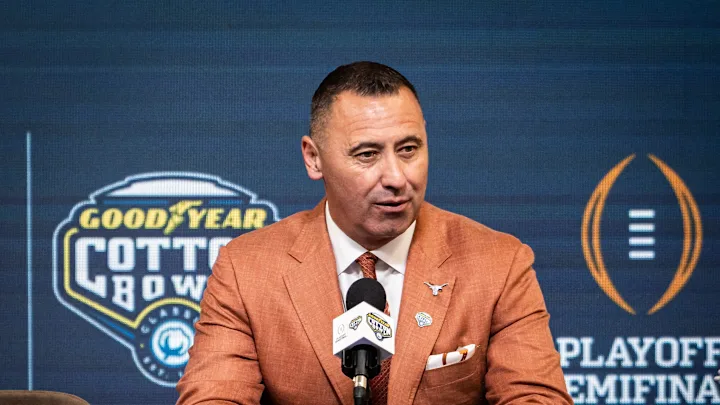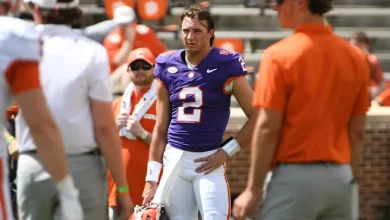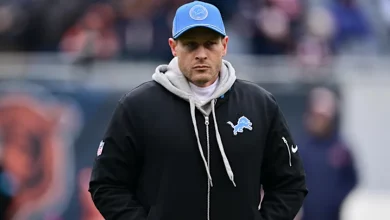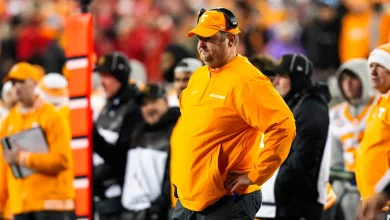Texas football: Steve Sarkisian explains why the Longhorns won’t have a 2025 spring game

Texas Football: Steve Sarkisian Explains Why the Longhorns Won’t Have a 2025 Spring Game
When it comes to college football, spring games are a time-honored tradition. These exhibitions allow fans to catch a glimpse of their team in action before the start of the regular season, often providing valuable insight into the roster’s strengths, weaknesses, and positional battles. For most teams, a spring game is an eagerly anticipated event—an opportunity to see the future of the program and get excited for what’s to come. However, in an unexpected move, the Texas Longhorns, one of the most storied programs in college football, have announced that they will not hold a spring game in 2025.
This decision has raised eyebrows across the college football world, particularly given the significance of spring games in the overall college football landscape. With fans in Texas known for their deep passion for their team and their annual interest in the spring game, this announcement has sparked widespread curiosity about why the Longhorns would forgo this tradition in 2025.
In a press conference, Texas head coach Steve Sarkisian addressed the reasoning behind the decision. While the move may seem unconventional, Sarkisian’s explanation sheds light on the deeper motivations and the long-term vision for the team’s development. This article will dive into the specifics of the decision, the rationale behind it, and what it means for the Texas Longhorns as they move forward in 2025 and beyond.
Why No Spring Game?
The decision to forgo a spring game in 2025 was not made lightly by Steve Sarkisian and his coaching staff. Traditionally, spring games are viewed as a way to give fans a taste of what’s to come while also serving as a valuable evaluation tool for the coaching staff. Spring games allow coaches to assess players in a more competitive, live-action environment than practice or scrimmages, and they often help coaches identify standout performers, depth chart positions, and areas that need improvement.
However, Coach Sarkisian explained that the reasoning behind skipping the 2025 spring game was based on a combination of factors related to the team’s goals and the logistical needs of the program.
1. Focusing on Player Development and Evaluation
For Sarkisian, the decision to skip the spring game in 2025 was primarily driven by the desire to maximize player development during the offseason. Spring practice offers coaches a critical opportunity to evaluate and develop their players, but a formal spring game, with all its pomp and circumstance, can sometimes distract from that goal.
“Our primary focus is player development, and we want to ensure we’re using every moment of spring practice to evaluate our players in the most effective way possible,” Sarkisian explained. “We felt like having a spring game in 2025 wouldn’t be conducive to our long-term development goals.”
By eliminating the need for a spring game, Sarkisian and his coaching staff plan to dedicate more time to focused, individual development. This includes spending additional time with the players in smaller, more targeted practice sessions, honing their skills, and addressing specific areas of weakness. While a spring game can offer some insights, Sarkisian believes that an unstructured, full-squad scrimmage would be more effective than a public exhibition where the emphasis is often on the entertainment value rather than player development.
“There’s a lot that goes into preparing for a spring game. When you put on the uniforms and have a crowd, it adds a layer of pressure. But what we’re really trying to accomplish this spring is getting back to fundamentals,” he added.
For Sarkisian, the spring game can sometimes detract from the primary purpose of the spring season: getting better, both individually and as a team. The 2025 season will feature crucial development, especially as the team prepares for the 2025 season opener and the challenges of transitioning into a competitive Big 12 and future SEC schedule.
2. Managing Player Health and Safety
Another factor in the decision was the health and safety of the players. Spring games can often lead to an increased risk of injury, particularly when players are pushed in a high-intensity environment without the same level of preparation and conditioning that they would have in a regular season game. Although spring games are typically light in contact and focus more on individual drills and situational practices, the competitive nature of these events can sometimes lead to avoidable injuries.
In Sarkisian’s view, the focus on injury prevention and player safety is a top priority. By skipping the spring game, Texas can ensure that their key players are not exposed to unnecessary risks, especially considering that injuries during the offseason can have long-lasting impacts on a player’s performance in the fall.
“Last year, we had some key players who got banged up in our spring game,” Sarkisian noted. “We’ve been talking about the importance of keeping our guys healthy and making sure they are ready for the season. This decision is in part a response to that need for player safety.”
In modern football, particularly in high-profile programs like Texas, every season is filled with high expectations, and the pressure to perform can sometimes lead to players being pushed too hard. With the added concern of NIL deals and the financial stakes for college athletes, Sarkisian and his staff are highly aware of the importance of safeguarding their roster. The 2025 season will see Texas enter a new chapter in its football journey, and keeping the team at full strength for the fall is critical.
3. New Approach to Spring Practice
Instead of holding a traditional spring game, Steve Sarkisian and his staff are implementing a different approach to spring practice in 2025. The plan is to focus on more specialized drills, situational scrimmages, and individual skill development, which they believe will provide greater value to the team as a whole.
“We’ll have competitive scrimmages, but we won’t have a formal ‘spring game’ as you’ve seen in the past,” Sarkisian explained. “Instead, we’ll focus on game-like situations, situational practices, and more focused development. We want to work on the things that will make us better prepared for the fall, not just put on a show for the fans.”
This shift in approach reflects a larger trend in college football, where programs are becoming increasingly concerned with optimizing the spring practice period for player development. Coaches are placing greater emphasis on building chemistry, improving fundamentals, and maximizing the efficiency of practice time, rather than focusing on putting together an entertaining exhibition.
For Texas, this represents a break from tradition, but one that Sarkisian believes is necessary for the team’s overall success. He sees this as an opportunity to refine the system, get more granular with player development, and ensure that the team is as prepared as possible for the rigors of the regular season.
4. Scheduling and Logistical Concerns
From a logistical standpoint, scheduling a spring game can be challenging for a program like Texas. With their extensive national recruiting pipeline, travel schedules, and high-profile spring practice plans, coordinating the logistics of a spring game can often take away from the overall efficiency of spring practice. With so many moving parts, Sarkisian and his staff determined that the resources and time required to execute a spring game could be better spent elsewhere.
“Part of our decision was looking at the logistics of everything,” Sarkisian said. “We have a lot of things to juggle—recruiting, spring practices, player evaluations—and the spring game is just one more event to add to the calendar. We felt like it wasn’t necessary this year.”
Given that Texas is one of the most high-profile football programs in the nation, everything from recruiting to media obligations plays a role in how the team prepares for the upcoming season. With all these demands, Sarkisian’s decision to focus on a streamlined approach to spring practice makes sense in terms of maximizing time and resources.
What This Means for Texas Football Fans
For fans of the Texas Longhorns, the absence of a traditional spring game may be disappointing. Spring games are a chance for fans to come together, see the future of the program, and start to get excited for the upcoming season. The excitement and energy surrounding spring games are palpable, and it’s a tradition that has become deeply ingrained in the culture of college football.
However, Coach Sarkisian has made it clear that while there may not be a public-facing spring game, fans should not take this as a sign of the program taking a step back. Instead, he is asking fans to trust the process and recognize that this decision is ultimately in the best interest of the team’s success.
“We know our fans love the spring game, and we understand the excitement that surrounds it,” Sarkisian said. “But the reality is that what we’re doing this spring will set us up for success in the long run. We want to be in the best possible shape when the fall rolls around.”
While the absence of the spring game might leave fans hungry for more, Sarkisian believes that his approach will pay dividends in the fall. By focusing on the long-term goals of player development, injury prevention, and team preparation, Texas football will be better positioned for a successful 2025 season and beyond.









